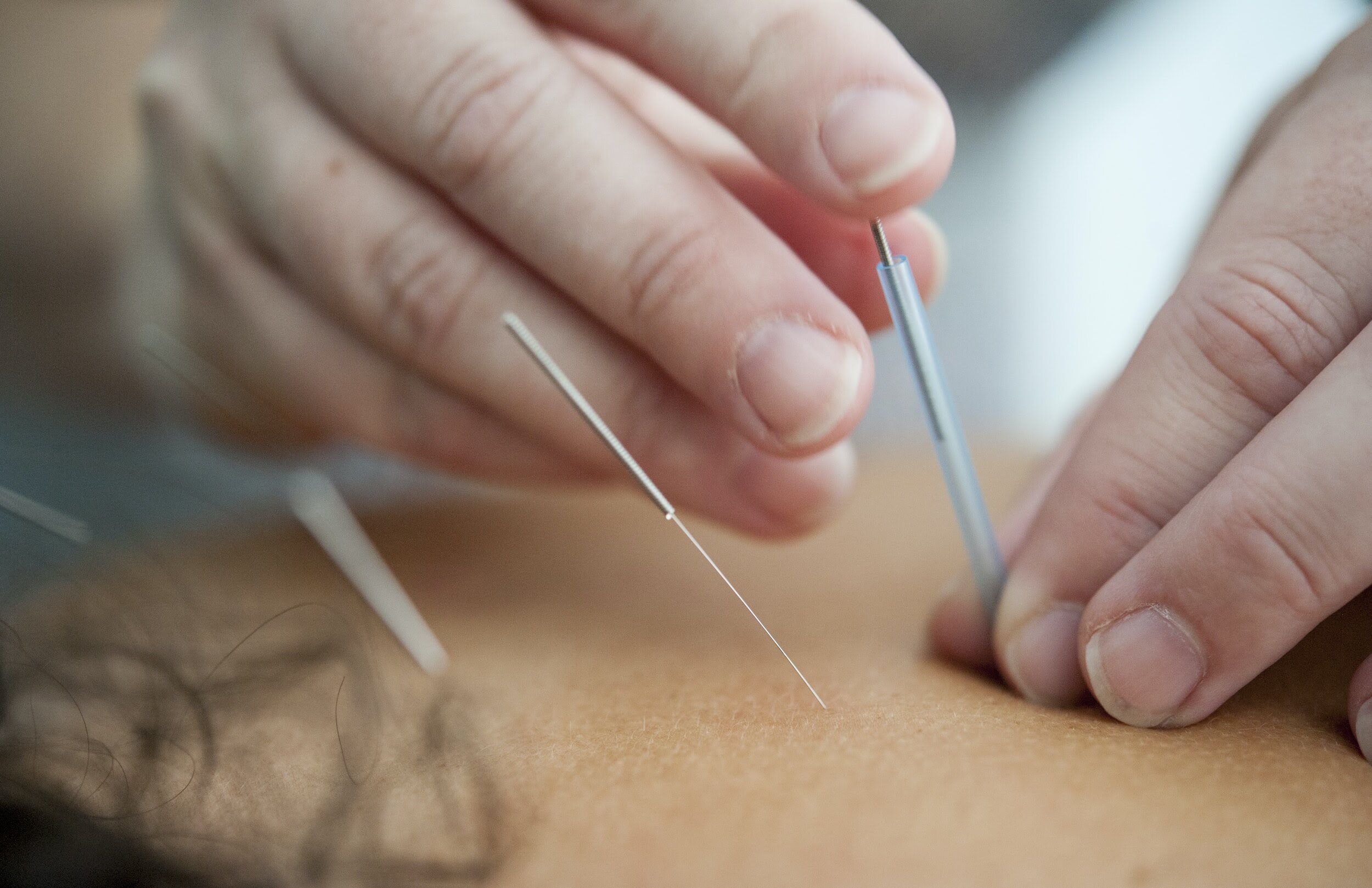Welcome to the Denver Holistic Health Blog
Scroll down to find posts listed by date or search by keyword or category.

What is Yoga Cikitsa (Therapy) Anyway?
The International Association of Yoga Therapy defines yoga therapy as: "The process of empowering individuals to progress toward improved health and well-being through the application of the teachings and practices of Yoga."
TKV Desikachar expands on this: “Yoga therapy is a self-empowering process, where the care-seeker, with the help of the Yoga therapist, implements a personalized and evolving Yoga practice, that not only addresses the illness in a multi-dimensional manner, but also aims to alleviate his/her suffering in a progressive, non-invasive and complementary manner. Depending upon the nature of the illness, Yoga therapy can not only be preventative or curative, but also serve as a means to manage the illness, or facilitate healing in the person at all levels.”

Mirror Therapy for Recovery from Stroke
MIRROR therapy is a way to help your brain “see” the affected side of your body moving. You place a mirror next to your unaffected limb, so the mirror reflects its movements. It looks like the weaker or paralyzed limb is moving just fine to your brain, like tricking your brain or training your brain to send the correct messages to your affected arm.
This trick helps wake up the brain’s motor areas and encourages healing. Over time, this can lead to better mobility, less pain, and more control. MIRROR therapy taps into your brain’s natural ability to adapt, called neuroplasticity. By practicing movements in front of a mirror, you’re “showing” your brain what it wants to see, which helps repair damaged pathways.

What is Myofunctional Therapy?
Over the past decade or so, we have started making the connection that the tongue is within the mouth, and the mouth is connected to our airway. We need open airways to breathe, eat, and sleep effectively, essentially all the things that keep us alive. If the tongue is interfering with the airway, we’ve got a problem in all three areas. Myofunctional therapy is a way to strengthen, tone, and teach the tongue where to rest within the oral cavity so it can get out of the airway during breathing, eating, and sleeping! It’s a specialty that focuses on the muscles of the face and mouth. If these muscles are working and functioning together properly, we have balanced craniofacial growth.

Why Do I Clench or Grind My Teeth?
A night of clenching/grinding, can lead to inflammation and tension of the muscles upon waking. Poor sleep quality and increased stress leads to tight muscles and TMJ concerns. Myofunctional therapy teaches you how to maintain a healthy breathing pattern at night (and during the day) with a proper tongue resting position into the roof of your mouth, or more specifically, out of the airway. This results in a restful nights sleep with the parasympathetic nervous system activated to promote a rest and digest slumber.

Box Breathing for Calm
This style of breath, also called a “Square Breath,” “4x4 Breath,” or “Equal Breathing,” can be used in moments of stress or anxiety, or simply when you’d like to calm down or relax. You may have heard of Box Breathing due to its use as a part of Navy SEAL training—it’s used by soldiers to reduce stress and improve focus during chaotic moments of combat. Research supports this technique to help regulate your autonomic nervous system and it is correlated with improved sleep quality, decreased blood pressure and heart rate, and decreased symptoms of depression.

Phases of Psychedelic Therapy
Psychedelic experiences often bring greater insight to how an individual has been showing up in their life that often inspires change and growth. Integrative psychedelic therapy supports this journey for each individual in a way that helps them feel connected through the process. While each psychedelic medicine has its own unique experience, a common effect is how each can soften emotions and emotional reactivity. In this way, the therapist is able to access and help patients process difficult experiences they have felt stuck in.

So What IS Acupuncture, Exactly?
I get asked this question so often. It’s the number one most-asked question. The complexity of Eastern healing is vast and trying to simplify it is a challenge. Acupuncture has been PROVEN to regulate the Central Nervous System (CNS), which controls most functions of the body and mind. It consists of the brain and the spinal cord. The spinal cord is the conduit for the signals between our body and the brain. When needles are administered in the body, sensory input, information processing, and motor output are all effected. By stimulating the CNS, several other systems are activated, like an increase of blood circulation which will release muscle-tension, the release of endorphins (our happy hormones), and the activation of the parasympathetic system, which controls our “rest and digest,” mechanisms.

CranioSacral Therapy: What Is It and How Can It Help You?
CranioSacral Therapy is a noninvasive therapy that assesses, modifies, and corrects restrictions in the craniosacral system to improve wellness and enhance the body’s ability to self-regulate. The craniosacral system is a physiological system that is responsible for the production, circulation, and re-absorption of cerebrospinal fluid (CSF). This fluid is what keeps your brain from hitting the side of your skull and it flows all the way down your spine and back up again. Not only does the CSF protect your brain but it also helps maintain the environment for your nervous system to develop, function, and thrive. The system itself consists of the ventricular system that produces the cerebrospinal fluid, dural membranes surrounding the spinal cord, and the bony and fascial attachments of membranes. The practitioner is observing and feeling for areas of restriction in what we call the craniosacral rhythm. This rhythm is the movement of the bones and body tissues in response to the flow of CSF that I mentioned earlier.

Is Melatonin a Safe Sleep Solution? What Users Need to Know
Millions of Americans are turning to Melatonin as a “natural” alternative to sleep aids … but is it safe? Endogenous melatonin is a hormone produced by the pineal gland in the brain and helps to regulate the body’s internal clock, called the circadian rhythm. The circadian rhythm is a 24-hour cycle that regulates various internal processes, including the sleep-wake cycle, body temperature, metabolism, and digestion. Melatonin’s job is to tell the body when these cycles start and stop in a 24-hour period. However, despite confused reports, melatonin plays no role in the quality, depth, or overall restfulness of sleep. Although melatonin is thought to help with sleep issues, it is not effective for chronic insomnia, restless sleep, frequent nighttime waking, or other troubles with sleep at night.

Box Breath aka Square Breath for Calm
This style of breath, also called a “Square Breath” or a “4x4 Breath,” can be used in moments of stress or anxiety, or simply when you’d like to calm down or relax. You may have heard of Box Breathing due to its use as a part of Navy SEAL training—it’s used by soldiers to reduce stress and improve focus during chaotic moments of combat. Research supports this technique to help regulate your autonomic nervous system and it is correlated with improved sleep quality, decreased blood pressure and heart rate, and decreased symptoms of depression.

Massage Therapy and the Safe and Sound Protocol
Dr. Stephen Porges created the Safe and Sound Protocol to encourage a state shift in our nervous system to a setting of safety. It’s not creating neuroplasticity; it moves the train to a different set of tracks that have been there all along. I initially discovered SSP when searching for interventions to help my son who has a diagnosis of autism, dyslexia, dysgraphia, dyscalculia, and ADHD. SSP creates a setting of safety in the individual’s nervous system increasing their capacity for social engagement.

Loss of the Sense of Smell After Covid-19
Dealing with a loss or distortion of your sense of smell affects many aspects of your life and can be debilitating. It can also be isolating because others may not understand how profoundly these conditions affect your ability to do normal, everyday things. Reaching out to others who are experiencing these symptoms or joining a support group can reduce feelings of disconnection and provide encouragement and resources. Fortunately, there are options if you or someone you know is suffering from these conditions.

The (Many) Things That Can Cause Dizziness & What To Do About It
Many adjectives can be used to describe dizziness: spinning, off-balance, falling, tipping, head pressure, vertigo, disequilibrium, wooziness, lightheadedness, headache, blurred vision, unsteadiness, etc. Often times the specific adjectives used to describe dizziness are related to the root cause of the dizziness. A trained medical provider can start getting to the bottom of your symptoms with an in-depth description of your specific dizzy feelings followed by special tests to determine a specific diagnosis. Arriving at a diagnosis can lead to a more efficient and effective treatment plan to reduce your dizziness and help you get back to your best life.

10 Ways Physical Therapy Can Help!
Physical therapy can help you reduce pain, get back to doing what you love, and help you perform at your peak ability. Check out our list of holistic PTs in the Denver area, available to help you virtually or in-person.
